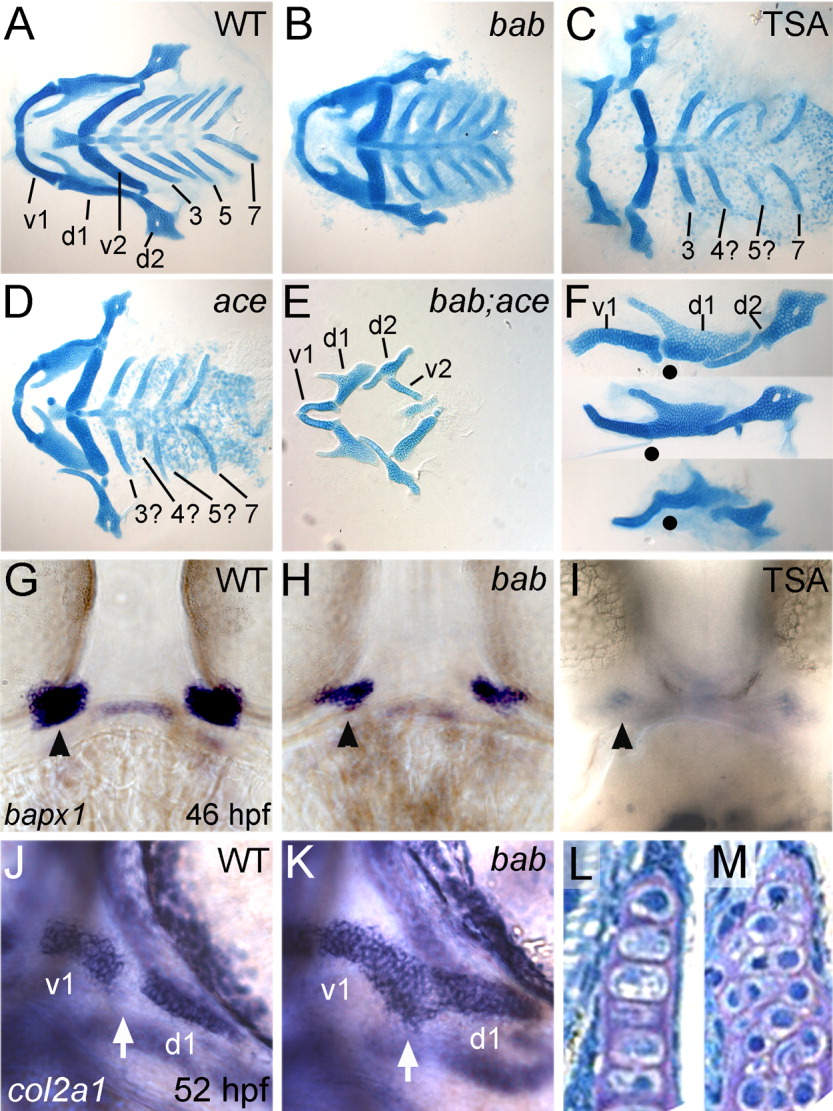Fig. 4 rerea genetically interacts with fgf8 in pharyngeal arch development, and disruption of histone deacetylase (HDAC) activity results in bab-like fusions of the first arch. A-M: Alcian blue-stained cartilage flat-mounts at 5 dpf (A-F), whole-mount in situ hybridizations of embryos with bapx1 (G-I) and col2a1 (J,K), and frontal sections through the palatoquadrate (d1 element, L,M) are shown for wild-type (WT; A,F top, G,J,L), bab (B,F middle, H,K,M), Trichostatin A (TSA) -treated (C,F bottom, I), ace (D), and bab;ace (E) embryos or larvae. Anterior is to the left in all images except G-I,L,M, which are frontal views on the mouth. A-E: Ventral views of flat-mounted cartilages with posterior arches numbered 3-7, reveal the presence but reduction in all elements in bab (B), a missing posterior arch in both TSA-treated (C) and ace (D), and a complete loss of posterior arches in bab;ace (E). Disruption of REREa (H) or TSA treatment (I) results in reduction of joint specification marker, bapx1 compared with wild-type embryos (G). Later col2a1 is misexpressed in cells of the presumptive joint (white arrow) in bab (K) compared with WT (J) leading to a fusion of the first arch cartilages (F, lateral view of arches 1 and 2) in wild-type (top F), bab (middle F), and TSA-treated (bottom F) embryos. Dots mark the position of the joint in each preparation. Chondrocyte morphology at 4 hpf is round in bab (M) compared with the stacked structure in wild-types (L). d1 and d2, dorsal cartilages of arches 1 and 2, respectively; v1 and v2, ventral cartilages of arches 1 and 2, respectively.
Image
Figure Caption
Figure Data
Acknowledgments
This image is the copyrighted work of the attributed author or publisher, and
ZFIN has permission only to display this image to its users.
Additional permissions should be obtained from the applicable author or publisher of the image.
Full text @ Dev. Dyn.

